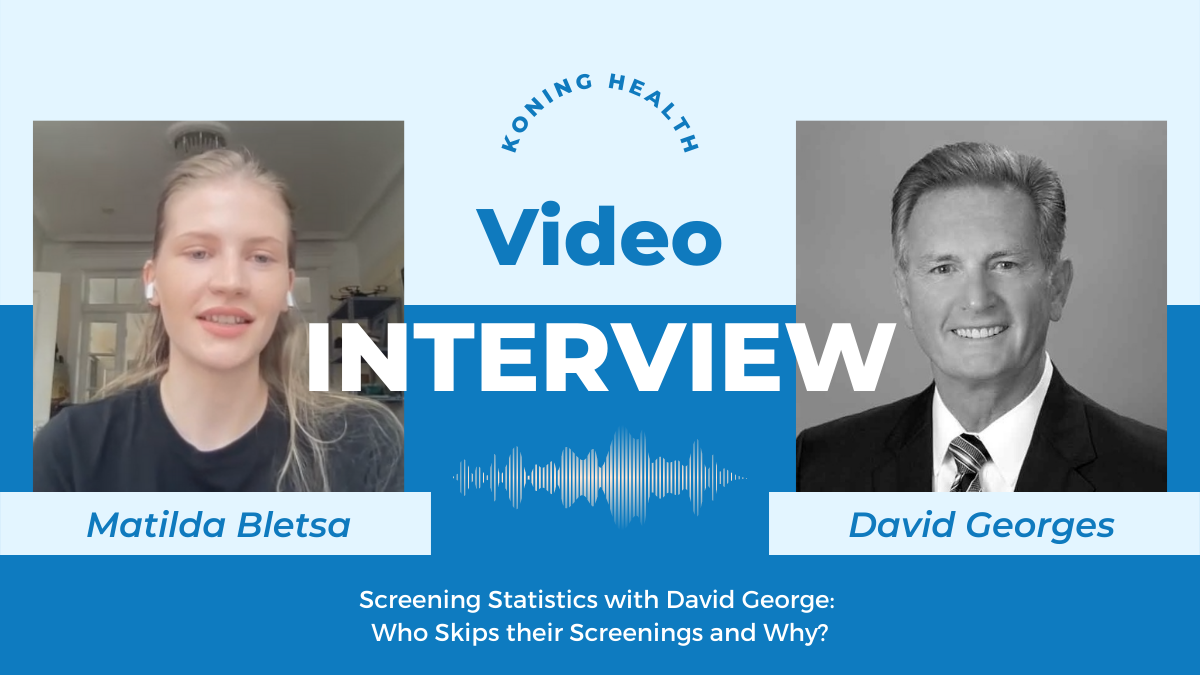
- Blog /
- July 27, 2022
Screening Statistics with David Georges: Who Skips their Screenings and Why?
Koning writer, Matilda Bletsa, interviewed David Georges, our North America President, about breast cancer screening statistics in the US. Who skips their screenings and why?
Matilda: What does the process of getting a screening appointment look like?
David: Patients are advised by their primary care physician to obtain an annual screening mammogram once they research the age of 40. Obtaining the order and making an appointment is a shared responsibility between the patient and the physician.
Matilda: We know that many screening-aged women in the US never make it to their annual screening appointments. What causes this issue?
David: It is a combination of things: many women can simply not stand the pain of compression. Many end up getting screened reluctantly while some skip it altogether. Many women are also severely underserved, either they do not have insurance or they lack understanding and education on the matter.
Matilda: What is Koning doing to address these issues?
David: Koning is creating an environment where compression and concern of overlapping structures have been eliminated. Our CT device is especially dedicated to breast imaging.
Matilda: When people skip their appointments, how often are they invoiced to go back, and is it statistically a permanent skip?
David: Approximately 40 million women receive their annual mammograms routinely. However, there are 83 million women over the age of 40 in the U.S., meaning that 43 million are not getting their annual mammogram.
Matilda: What is the cost of a skipped appointment?
David: If measured in personal health, the cost could be enormous.
If measured financially, it is noteworthy that all insurance companies are mandated to provide annual screening mammograms to patients over the age of 40 at absolutely no out-of-pocket cost.
Matilda: Are there modalities that have a lower percetage of no-shows?
David: Most patients who do get screened are relatively compliant regardless of whether the imaging process is inconvenient. MRIs, for instance, are very lengthy and uncomfortable, but all imaging modalities do have their drawbacks.
Matilda: What was the transition from DBT to mammograms like?
David: Mammography changed the game dramatically as it continued to evolve and bring significant improvement; Koning is looking at breast CT as the next step in that evolution of equipment. We are hoping to eliminate compression, providing doctors the opportunity to see true 3D-images of breast tissue. When necessary, the option to do contrast enhanced imaging with the breast CT device is available as well.
